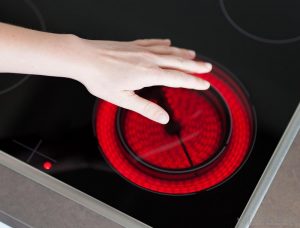 We’ve all been there. Cooking dinner around the stove and mistakenly touch the burner or element with our finger. Instantaneously and instinctively our hand immediately withdraws from the heat and we quickly look to see if we need to run it under cold water or worse, grab the bandages.
We’ve all been there. Cooking dinner around the stove and mistakenly touch the burner or element with our finger. Instantaneously and instinctively our hand immediately withdraws from the heat and we quickly look to see if we need to run it under cold water or worse, grab the bandages.
Individuals can have a similar instinctive reaction when they are burned by the market. When the market is highly volatile they’re gut reaction may be to pull their hand away quickly and easing the pain by selling and getting out.
It would seem almost malapropos to keep a hand on the hot stove knowing that doing so will result in further pain and injury. And it would be unthinkable to place the other hand on the stove so both are feeling the heat.
Naturally, no one likes to lose money. When markets go down it is perfectly understandable for individuals to not want to subject themselves to further loss and the pain of seeing account values decline. However, for many individuals, especially those with long time horizons, it can be perfectly sane to keep their hand on the stove (invested in the market). Perhaps a bold few will have the audacity to put both hands on the stove (invest more money when markets are down).
Some individuals may want to consider a lukewarm approach by having multiple burners going, yet set to different settings (diversification). This way, when one burner is really hot (say, stocks are plummeting) they can place their hands on a different burner (a different, less-correlated asset such as bonds or REITs) and still stay close to the stove, without getting burned.


 Sterling Raskie, MSFS, CFP®, ChFC®
Sterling Raskie, MSFS, CFP®, ChFC® The latest in our Owner’s Manual series, A 401(k) Owner’s Manual, was published in January 2020 and is available on
The latest in our Owner’s Manual series, A 401(k) Owner’s Manual, was published in January 2020 and is available on  A Medicare Owner’s Manual, is updated with 2020 facts and figures. This manual is available on
A Medicare Owner’s Manual, is updated with 2020 facts and figures. This manual is available on  Social Security for the Suddenly Single can be found on Amazon at
Social Security for the Suddenly Single can be found on Amazon at  Sterling’s first book, Lose Weight Save Money, can be
Sterling’s first book, Lose Weight Save Money, can be  An IRA Owner’s Manual, 2nd Edition is available for purchase on Amazon. Click the link to choose the
An IRA Owner’s Manual, 2nd Edition is available for purchase on Amazon. Click the link to choose the  Jim’s book – A Social Security Owner’s Manual, is now available on Amazon. Click this link for the
Jim’s book – A Social Security Owner’s Manual, is now available on Amazon. Click this link for the  And if you’ve come here to learn about queuing waterfowl, I apologize for the confusion. You may want to discuss your question with Lester, my loyal watchduck and self-proclaimed “advisor’s advisor”.
And if you’ve come here to learn about queuing waterfowl, I apologize for the confusion. You may want to discuss your question with Lester, my loyal watchduck and self-proclaimed “advisor’s advisor”.